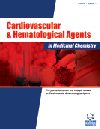
Full text loading...
We use cookies to track usage and preferences.I Understand
Hypothermia and autophagy are critical regulators of cell homeostasis by regulating intra and intercellular cell communication. Myocardiocyte cryotherapy poses multiple cellular and subcellular effects on the injured cell, including upregulation of autophagy. Autophagy plays a crucial role in modifying cell metabolism by regulating downregulation, reducing reactive oxygen species production, and improving the natural cellular antioxidant defense system. Reduction of reactive oxygen species production and improving natural cellular antioxidant defense system. Therapeutic hypothermia ranges from 32-34°C in terms of local myocardiocyte cooling. Hypothermia induces autophagy by phosphorylating the Akt signaling pathway. Hypothermia has a more therapeutic effect when applied at the beginning of reperfusion rather than in the beginning of ischemia. Moderate hypothermia with 33°C poses most therapeutic effect by viability maintaining and reduction of reactive oxygen species release. Application of local hypothermia to myocardiocytes can be applied to infarcted myocardiocytes, anginal and to the cardiomyopathies.

Article metrics loading...

Full text loading...
References


Data & Media loading...

